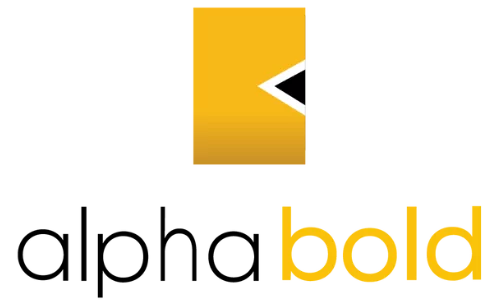Introduction
In this modern world of technology, Smart Temperature Monitoring Systems (STMS) are widely used in various industries to keep track of the temperature of items/environments/components. These may include food, beverages, medicine, oil and gas, chemical solutions, etc. The core idea of installing these IoT-enabled systems is to ensure the quality of items, reduce waste, and increase productivity.
What is a Smart Temperature Monitoring System?
A STMS controls and regulates the temperature of a particular environment, item, station, or component. It is done by first monitoring the temperature and then maintaining it within defined thresholds with the help of a cooling or heating mechanism. More features include automatic alerts, notifications for changes in temperature, reports, temperature tracking, etc.
These systems are available in both on-prem and cloud-based distributions. However, the primary purpose remains the same, i.e., enabling tracking and controlling the temperature-sensitive items or environments.
Salient features of a Smart Temperature Monitoring System
There are multiple components of STMS. The following are some of the essential ones:
-
Temperature sensor:
The temperature sensor or probe is responsible for the measurement of temperature data. Since every type of sensor has its own limits and capabilities, you must select one according to your application requirements. Some of the examples are mentioned below.
-
-
Closed Container Temperature Monitoring
-
DHT22 is a primary and low-cost digital temperature sensor for measuring the surrounding air. DHT22 uses a thermistor to measure the surrounding temperature and outputs a digital signal on its data pin. It also covers a good temperature range from -40 to 80°C with an accuracy of ±0.5°C.
-
-
Food And Beverage Temperature Monitoring
-
For measuring liquids, gas, or food items, the PT100 temperature probe is widely used. It is a Resistance Temperature Detector (RTD) probe with a robust construction with the sensing element encased in a rigid 316 stainless steel sheath. With the increase in temperature of the metal, its resistance also increases. This resistance can be measured and converted to a temperature reading. The temperature range covered by this sensor varies across models. However, the basic temperature range covered by this sensor is from -50 to 200°C.
-
Temperature Measuring Device
After measuring the readings through the sensor, also known as telemetries, this data is streamed through a temperature measurement device (TMD). A TMD performs the following functions:
-
- Digitizing the analog temperature data by connecting to the sensor.
- Recording entries of the data.
- Processing the data
- Streaming data to the server
TMDs are generally categorized into the following types:
-
Standalone:
A standalone TMD is self-sufficient and doesn’t require any additional device to record or process temperatures. It shows the temperature on the on-chip display.
-
Networked:
A networked TMD connects with a PC, server, or cloud via LAN or Wi-Fi to send and receive data. This includes a more extensive wireless range with a robust data update rate. For multiple fixed points that need readings to be collected in real-time, it’s better to invest in a networked TMD.
-
Data Storage
Depending on the given business application, there may be a need to store temperature data after every hour, a minute, or second. It means that an appropriate data storage option is required. Four types of data storage options can be used in a TMS.
-
- Local Memory: SD Card/USB stick.
- Database [on-prem, cloud].
- Data streaming services.
Note: Telemetry data can lead to big data challenges; therefore, time must be invested to design the data architecture of the solution for scalability and to keep it cost-optimal. More on this later in this article.
Features of a good Smart Temperature Monitoring System
-
Accuracy
An excellent STMS must provide accurate temperature readings. This can be ensured while choosing the most suitable system specifications based on the business requirements.
-
Adequate battery backup
Temperature monitoring systems are meant to monitor the temperature of the environment or items 24/7, and this is done to mitigate the operational risk in case of power failure. A well-designed STMS must have a longer battery life; however, that too depends on the business requirements.
-
Suitable data architecture
This is one of the important, yet often overlooked points. Telemetries are classified as time-series data, leading to big data challenges, and temperature readings are no different. For example, if the IoT device generates data at the sampling rate of 1 ms [1000 telemetries per second], handling this data load leads to the cost overhead associated with data storage and subsequent processing. In many situations, that level of data processing may not be required. Here are some of the important considerations when designing a cost optimal IoT solution from the data processing standpoint:
- Telemetry streaming must be conducted on a secure channel
- The essential processing needs to be done on-chip/on-device
- The resultant data must be streamed to the server for downstream processing, which includes:
- Plotting
- Notifications
- Integration with other business systems [such as the field service modules in ERP systems]
- Keeping data [not the whole time series, but let’s say mined information such as the mean/high/low values of the data points in a time window] for generating insights such as predictive maintenance [AI/ML]
- This also helps in keeping the data transfer between the device and the server manageable and keeps the solution bandwidth-friendly
-
Alarms / Notifications
Alarms or notifications are one of the most critical parts of a smart temperature monitoring system. With alarms and notifications, the temperature differences can be recognized in real-time. This helps in proactively managing critical situations and preventing risks to the items/environment.
Explore Our Services
Conclusion:
In this article, we have discussed what a smart temperature monitoring system is, which industries are using it, and the most important features of a STMS that make it a reliable system for manufacturing companies. Additionally, we have shared a few examples of sensors that can be used for different applications. We will be publishing more articles where we will discuss more use cases of temperature monitoring in the industry and share a demo tutorial for it.
If you are interested in learning more about Temperature Monitoring systems, contact us at sales@alphabold.com

